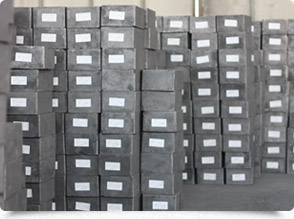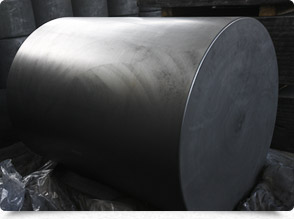Graphite, also called plumbago or black lead. Graphite has a layered structure that consists of rings of six carbon atoms arranged in widely spaced horizontal sheets. Graphite thus crystallizes in the hexagonal system, in contrast to the same element crystallizing in the octahedral or tetrahedral system as diamond. Such dimorphous pairs usually are rather similar in their physical properties, but not so in this case. Graphite is dark gray to black, opaque, and very soft (with a hardness of 1 1/2 on the Mohs scale), while diamond may be colourless and transparent and is the hardest naturally occurring substance. Graphite has a greasy feel and leaves a black mark, thus the name from the Greek verb graphein, “to write.” For detailed physical properties of graphite, see native element (table).


Graphite is formed by the metamorphosis of sediments containing carbonaceous material, by the reaction of carbon compounds with hydrothermal solutions or magmatic fluids, or possibly by the crystallization of magmatic carbon. It occurs as isolated scales, large masses, or veins in older crystalline rocks, gneiss, schist, quartzite, and marble and also in granites, pegmatites, and carbonaceous clay slates. Small isometric crystals of graphitic carbon (possibly pseudomorphs after diamond) found in meteoritic iron are called cliftonite.
Graphite is used in pencils, lubricants, crucibles, foundry facings, polishes, arc lamps, batteries, brushes for electric motors, and cores of nuclear reactors.Graphite products such as graphite rods, graphite blocks, graphite plates etc. It is mined extensively in China, India, Brazil, North Korea, and Canada.
Graphite was first synthesized accidentally by Edward G. Acheson while he was performing high-temperature experiments on carborundum. He found that at about 4,150 °C (7,500 °F) the silicon in the carborundum vaporized, leaving the carbon behind in graphitic form. Acheson was granted a patent for graphite manufacture in 1896, and commercial production started in 1897. Since 1918 petroleum coke, small and imperfect graphite crystals surrounded by organic compounds, has been the major raw material in the production of 99 to 99.5 percent pure graphite.
article from: http://www.xrdcarbon.com/industry_news/231.html
没有评论:
发表评论